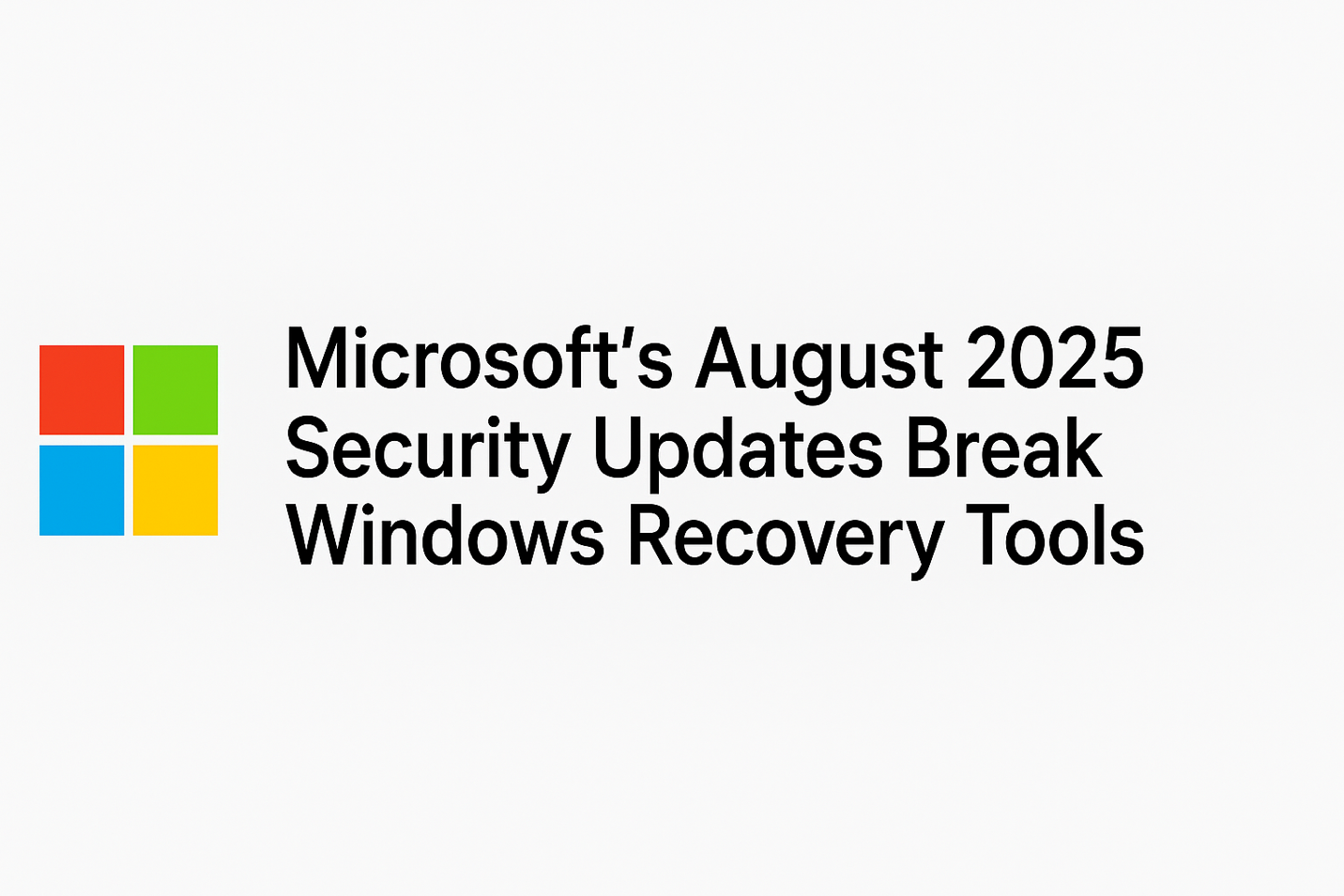Microsoft 2025 August Patch

Microsoft’s August 2025 security updates are causing unexpected issues for Windows 10 and Windows 11 users. Reports indicate that recovery and reset tools are failing silently after installation of the latest patches, leaving users without reliable system recovery options.
Recovery and Reset Tools Fail Silently
The bug affects multiple versions, including Windows 11 22H2 and 23H2, as well as Windows 10 22H2, Windows 10 Enterprise LTSC 2019/2021, and Windows 10 IoT Enterprise LTSC 2019/2021. According to Microsoft, users attempting to reset their PCs using the Reset this PC option or the Fix problems using Windows Update feature may find the process failing midway without warning.
Testing by Windows Latest revealed that on Windows 11 23H2, the reset process starts but rolls back immediately, leaving the system unchanged. While personal files remain intact, the reset feature becomes unusable. The silent nature of the failure is particularly concerning—users only discover the issue when they actually try to reset their PC.
The problem also extends to IT administrators who depend on the RemoteWipe configuration service provider to reset devices remotely, creating potential complications for enterprise environments.
Emergency Fix in the Works
Microsoft has acknowledged the issue and confirmed it is developing an out-of-band update to resolve the problem. An emergency patch is expected to roll out in the coming days, although exact timelines remain unclear.
Storage Drive Failures After Update
In addition to recovery failures, another bug linked to the Windows 11 update KB5063878 is emerging. Users report that under heavy workloads—such as large file transfers exceeding 50GB—storage drives can disappear entirely. While many drives reappear after a system reboot, in some cases SSDs are left corrupted and inaccessible.
Early analysis by X user Nekorusukii (@Necoru_cat) suggests the problem may be tied to how storage devices handle caching and metadata mapping. Microsoft has not yet officially acknowledged this issue, leaving users who handle large-scale data transfers vulnerable to potential data corruption.
What Users Should Do
Until Microsoft releases fixes, users are advised to avoid resetting or restoring their systems and be cautious when transferring very large files. Enterprises relying on recovery or wipe features should take extra precautions and monitor Microsoft’s updates closely.
The situation underscores the risks of cumulative updates and highlights the need for rapid response when critical system features are affected.